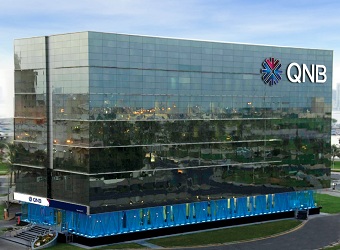The Global economic outlook continues to be revised downwards for 2013, due to weaker growth in advanced economics, especially the Euro Area. However, forecasts for Developing East Asia continue to hold strong, according to QNB Group.
The World Bank in its recent update on East Asia was more upbeat about the region and forecasted a real GDP growth of 7.9% for 2013, after an estimated growth of 7.5% in 2012. No other region in the globe has been able to match this level of growth or is likely to come close in potential growth for 2013-14.
Countries in Developing East Asia have been very resilient in 2012, as domestic demand and foreign direct investment (FDI) supported growth, even in the midst of a difficult external environment that resulted in weak global demand for its exports. Domestic demand along with a sustained FDI flows will be the key drivers for economic growth in 2013.
The Developing East Asia region is spurred on its growth trajectory by the world’s second largest economy – China. Real GDP growth in China is estimated to have slowed down in 2012 to 7.9%, from 9.3% in 2011. The main reasons for the slowdown in the Chinese economy are attributed to domestic policy tightening in late 2011 that led to a pull-back in domestic demand and also due to weaker demand for exports from Advanced Economies. However, recent economic indicators point towards a pickup in economic activity in China. Real GDP data for the third quarter of 2012 showed a significant growth of 9.1% quarter-on-quarter. Retail sales increased by 14.9% year-on-year in November, indicating a strong surge in domestic demand. China’s Manufacturing Purchasing Manager Index (PMI) stood at 50.6 in November, slightly above the 50 point mark, which separates expansion from contraction.
China is forecast to grow at 8.4% in 2013, up from 7.9% in 2012 as domestic policy easing, local government fiscal stimulus initiatives, government infrastructure projects, and an upswing in the business cycle supports growth.
The other major economies in Developing East Asia are Indonesia, Thailand, Malaysia and the Philippines. Indonesia has the second largest economy in the region and is forecast to grow by 6.3% in 2013, supported by private consumption demand and strong business and investment regulations that have encouraged a consistent flow of FDI. Thailand is forecast to grow by 5.0% in 2013, as it completely recovers from the devastating floods in 2011, supported also by strong FDI flows, manufacturing and domestic demand. Malaysia is also expected to grow by 5.0% in 2013, as higher commodity prices support exports, which along with investment growth and private consumption will drive real growth. The Philippines is forecast to grow by 6.2% in 2013, as domestic consumption which accounts for 75% of GDP drives overall growth, underpinned by remittances from overseas foreign workers and increased government spending.
The downside risks to the Developing East Asia region arise from a stronger than expected slowdown in global growth. Global real GDP growth in 2013 is currently forecast at 2.4%. The forecast for high-income countries is at only 1.3%, as fiscal consolidation and deleveraging in the banking systems continue to be a drag on growth. This will result in weak demand for exports from the Developing East Asia region, according to QNB Group. Risks posed from the ‘fiscal cliff’ in the world’s largest economy is also likely to have a significant impact on growth in the region. It is estimated that a recession in the US will pull down growth in the region by around 1%.
Press Release





